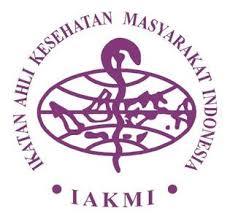Keberadaan Jentik Aedes aegypti di Kelurahan Karangjati
Abstract
Abstrak
Kasus DBD di Kecamatan Bergas cenderung meningkat, tahun 2016 Kelurahan Karangjati memiliki kasus DBD terbanyak yaitu sebesar 19 kasus. Dari studi pendahuluan pada 10 rumah, sebanyak 70% rumah positif terdapat jentik. Tujuan penelitian ini untuk mengetahui faktor yang berhubungan dengan keberadaan jentik Aedes aegypti. Jenis penelitian ini observasional analitik dengan pendekatan cross sectional. Sampel berjumlah 93 rumah yang diambil dengan teknik proportional random sampling. Data dianalisis menggunakan uji chi square (α=0,05). Penelitian dilakukan pada bulan Mei 2018. Hasil menunjukkan bahwa kepadatan jentik termasuk dalam kategori tinggi. Hasil uji statistik menunjukan jumlah kontainer (p=0,006), jenis kontainer (p=0,017), volume kontainer (p=0,018), bahan kontainer (p=0,001), keberadaan tanaman pekarangan (p=0,001), praktik PSN (p=0,0001) berhubungan dengan keberadaan jentik Aedes aegypti. Sedangkan jumlah penghuni (p=0,436) dan status pekerjaan (p=0,347) tidak berhubungan dengan keberadaan jentik Aedes aegypti. Penelitian ini menyimpulkan bahwa variabel praktik PSN menjadi faktor paling dominan yang mempengaruhi keberadaan jentik Aedes aegypti..
Abstract
Trend of DHF in Bergas subdistricts has increased, in 2016 Karangjati village has the most cases of DHF with 19 cases. The preliminary survey on 10 homes, 70% have larvae. The purpose of this study to determine the factors associated with the presence of Aedes aegypti larvae. This was an explanatory research with cross sectional approach. The total amount of 93 houses sample was taken with propotional random sampling technique. Data were analyzed by chi-square test (α=0,05). The results showed that density figure on high level. This study was done on May 2018. Results of statistical test showed the number of containers (p=0,006), container type (p=0,0001), container volume (p=0,0001), container material (p=0,0001), gardens plant (p=0,001), practice PSN (p=0,0001) associated with the presence of Aedes aegypti larvae. While the number of occupants (p=0.436) and occupation (p=0.347) not related with presence of Aedes aegypti larvae. This study concludes that practice PSN becomes the dominant factor that affecting the presence of Aedes aegypti larvae.
Keyword : Larvae, Aedes aegypti, Container





